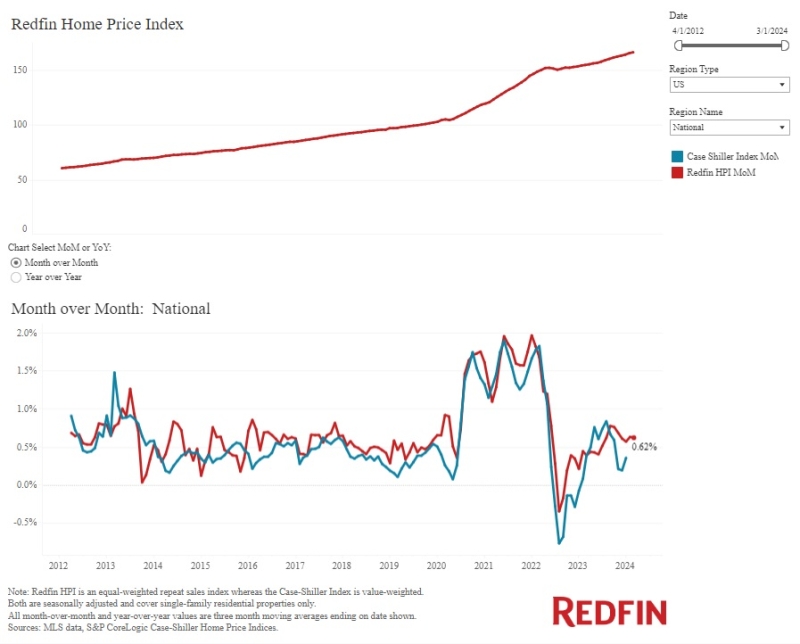Advertisement
Utilizing direct mail for soliciting new borrowers and maintaining your current database
Rising rates don't mean the sky is falling - Credit analysis, optimization and simulation help lenders close more loans, regardless of what the rates doDavid ChungClosing loans, Credit analysis tools, Rapid rescoring, Credit optimization tools, Credit simulation tools
If the ebb and flow of interest rates make you as queasy as a
day of deep-sea fishing, perhaps it's time to take control of your
destiny. The simple way to succeed during uncertain times is to
control the factors that remain consistent.
For the consumer mortgage market, these factors are easy to
identify. While you can't control overall interest rates, you can
influence how much applicants pay by helping them to qualify for
the best available rates. While you can't command more applicants
to enter the marketplace, you can influence how many applicants
select you over your competitors. While you may not be able to make
the phone ring, you can improve the percentage of shoppers that
convert into loan customers. Rather than allowing the vicissitudes
of mortgage rates to control your fortune, you can utilize the last
gasps of the refinance boom to shore up your business for leaner
times ahead.
Do More to Get More: A Little Effort Goes a Long
Way
In making a large, long-term financial commitment, applicants want
to feel comfortable with you, the mortgage process and the rates
they'll pay. By understanding and filling this need, you can win
business and close more loans regardless of the market environment.
Loan officers can quickly become the applicant's adversary at
negotiation time. However, by adopting a consultative role, you can
serve as the applicant's advocate. Applicants want to get the best
rate possible. They expect a trusted advisor to go the extra mile
to get what they want or at least exhaust all options trying. When
an applicant doesn't qualify at all or isn't happy with the rate
you are offering, do you explore other options? Are you doing
everything you can to help your applicants? If they see that you
are, you'll win their trust and close the loan.
Instill Rate Confidence: Make Your Offers Stand
Out
Loan shoppers focus heavily on rates. By incorporating credit
management tools into the application process, you can deter
clients from rate shopping further by helping them qualify for the
best possible rates and by demonstrating why their rates may not be
as attractive as they expected.
You can improve the rate picture by identifying old or
inaccurate information that may be preventing applicants from
qualifying for lower rates, or for a loan at all. You may also be
able to determine simple actions applicants can take to improve
their position. You can also demonstrate why the rates published in
the newspaper may not be the rates an applicant might actually
receive from the competing lender.
By explaining to an applicant not just what they qualify for,
but the specific reasons why, you provide valuable context along
with your loan offer that makes it easier to accept. All of this
gives applicants the assurance that they really are getting the
best rates they can, thereby eliminating their need to continue
shopping. By showing an applicant what actions to take and how they
can qualify for better rates, your offer stands out because it
includes the potential to save more money now and in the
future.
Improve Efficiency: Get More Out of Your
Process
In response to consumer demand, savvy lenders are enriching the
mortgage origination experience and steadily shifting toward a
friendlier, more consumer-centric approach. Some of the heaviest
hitters in the industry have invested in new systems and programs
that make the loan experience not only faster, but also simpler and
easier to understand.
You can help shoppers understand the loan process and what they
can do to qualify for the best possible loans. In response, they
will turn to you for guidance, assistance, and when the time is
right, an application. If an applicant does not qualify for a loan,
you have an opportunity to follow through with the consultative
approach by providing a road to recoverya plan that shows them how
to improve so they can qualify later. By continuing to serve as
their trusted advisor, you potentially recover your investment by
encouraging applicants to return when they have improved and are
ready to apply again. Rehabilitation is a strategy that is gaining
significance as the industry becomes increasingly competitive.
You may also be able to convert declines into qualifying
applicants by identifying information on their credit report that
can be corrected, or areas where immediate improvements can boost
scores. By providing a better borrowing experience that is easy to
understand and navigate, you make it easier to complete the
transaction. Your applicants will be thankful and you will close
more loans.
New Options: More That You Can Do
Today's advanced tools help you improve how you work with potential
borrowers and how you convert them into customers. Credit
management tools introduced in the recent years such as credit
analysis, optimization and simulation provide you with new insights
and options so you can better understand how to handle a given
applicant. Most loan officers derive an intuitive understanding of
the dynamics of credit and credit scoring through years of
experience, but that intuition is not detailed or accurate enough
to effectively communicate to the applicant or to act upon. In
fact, there has been a stir about loan officers providing bad
advice. Also, many lenders are complaining that their loan officers
are spending too much time explaining what an applicant's credit is
like and why it is not good enough for a better rate.
Credit analysis tools are a simple way to accurately provide the
information that applicants want without tying up loan officers.
Credit analysis is also a valuable way to focus and prioritize your
attention by giving you a place to start looking. As a lender, you
know all about the semantics of credit scoresthis score is too low,
this score is good enough and this score is stellar. However, the
reasons why are a bit of a mystery. Understanding these reasons
will help you determine possible courses of action.
Credit optimization tools run through different combinations of
actions and determine the best combination to quickly improve an
applicant's credit. Optimizers have the advantage of using actual
credit scoring algorithms to determine the best action plans.
Credit simulation tools help you understand how changes to a
credit report are likely to impact credit scores. By testing
strategies using a simulator, you can see probable outcomes and
safely determine the right course of action. That way, you can
safely guide advise an applicant about correcting information or
paying down debt while avoiding costly changes that will not yield
desirable results.
One of the most significant services available in recent years
is rapid rescoring. This is essentially an expedited credit bureau
update. Typically, this process takes around four days to complete
and costs roughly $150. Fees range widely because they are incurred
per item changed at each credit bureau. Rapid rescoring has a
significant impact because it allows loan officers to address items
that artificially restrict an applicant within the current loan
process, so the applicant does not need to go through declination
and reapplication.
However, a danger to rapid rescoring is that loan officers are
making educated guesses about whether or not changes will have the
desired effect. It is often a costly gamble because you make the
applicant wait four days and pay a substantial fee for a service
that may or may not help them and could, in fact, hurt. This could
create a relationship nightmare, especially if you end up leaving
the applicant worse off than when you started. Therefore, it is
important to use tools that allow you to test strategies before you
make a decision to do a rapid rescore. This gives you a chance to
gauge whether it is worth the added time, expense and expectation
to perform a rapid rescore. Again, credit simulators can let you
test your strategies and make that decision. Although simulators
are prone to some of the same assumptions that you currently have
to make (e.g. nothing unexpected is about to hit the credit file),
simulators have the advantage of utilizing, instead of being
restricted by, the complexity of credit scoring to predict a
result. Obviously there are no guarantees, but simulators can
provide a more accurate prediction. And by improving your success
rate, rapid rescoring becomes a more profitable option.
Using these tools, you can diagnose and communicate an
applicant's credit, identify opportunities to improve it, test the
strategies, simulate the outcome and take action.
Close More Loans: Get More Out of What You Already
Have
Building trusting relationships and adopting a consultative
approach helps you win business. By bridging the information gap
and utilizing all of the tools at your disposal, you can provide an
enhanced borrowing experience and improve the processyou can get
more shoppers to become applicants, more applicants to become
qualified borrowers and more qualified borrowers to accept offers
and become customers. By increasing efficiency and improving your
closing rates, you increase your margins. This will make it easier
for you to ride out the high rates and better position you to
capitalize on the next market boom.
David G. Chung is interim president and vice president of
business development at CreditXpert Inc. He can be
reached by e-mail at [email protected].
About the author





